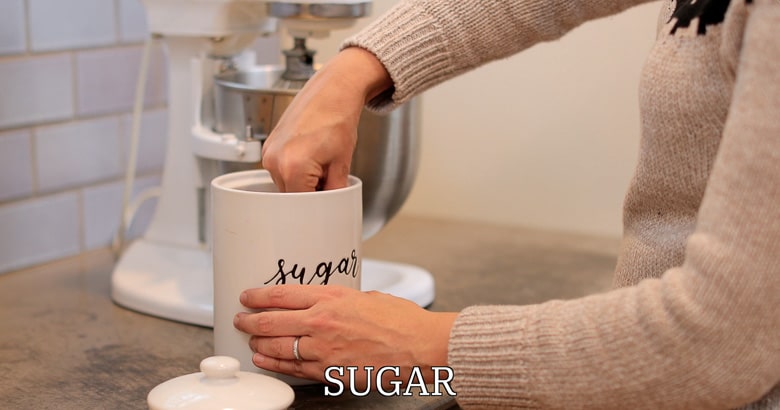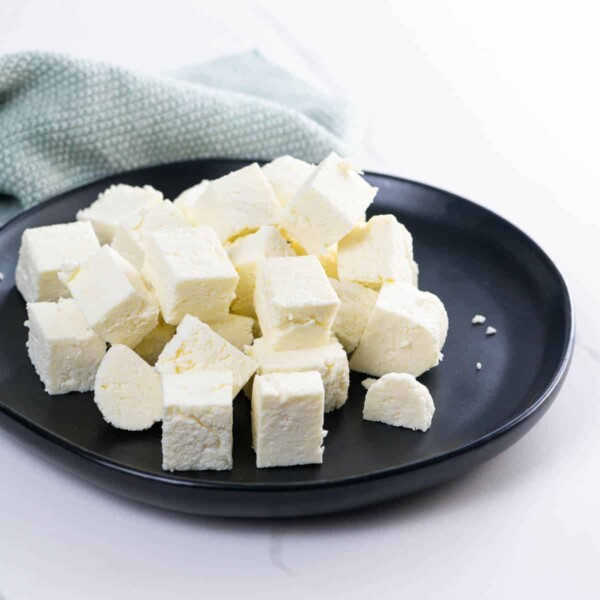This post may contain affiliate links. Learn more.
Whether you’re whipping cream to spoon on top of a perfect bowl of balsamic strawberries, the world’s best waffles, or a gorgeous pavlova, you’ll need to know how to create and identify soft, medium, and firm peaks. Here’s how to do it.

Table of Contents
- What is whipped cream made of?
- What’s the difference between heavy cream and whipping cream?
- What kind of sugar should I use for whipped cream?
- Protips for the best whipped cream
- How to whip cream, step by step
- What are soft peaks?
- What are medium peaks?
- What are firm peaks?
- What happens after firm peaks
- How to fix over-whipped cream
- What to serve with whipped cream
- Whipped Cream Recipe
What is whipped cream made of?
Most of the time, whipped cream has three simple ingredients:

- Heavy cream (or heavy whipping cream) creates the base. Choose the best-quality one you can. For taste, health, and environmental reasons, I always buy organic heavy cream.
- A little bit of pure vanilla extract flavors the whipped cream beautifully.
- You can use regular granulated sugar or powdered sugar.
Once in a while you’ll find a need for an even simpler, one-ingredient version of whipped cream. If your dish is savory, you might not need sugar or vanilla. And sometimes you’ll want to swap in a different flavoring, such as peppermint or chocolate, for the vanilla. In the regular-sized batches you’ll be making at home, neither of these changes will affect the whipping process enough to worry about.
What’s the difference between heavy cream and whipping cream?
Heavy cream and heavy whipping cream are basically the same thing. These products contain at least 36% milk fat. This is what you want to use for whipped cream. It will whip up beautifully and will hold its structure the best (and for longest).
Whipping cream contains less milk fat (usually 30 to 35%) and won’t have quite the same heft and staying power as heavy cream/heavy whipping cream. It’s best avoided when making whipped cream.
What kind of sugar should I use for whipped cream?
You can use either granulated sugar or powdered sugar (confectioner’s sugar) to make whipped cream. I tend to use about 1/4 cup of granulated sugar for every pint (2 cups) of cream.
Powdered sugar works perfectly too, but since it’s a little messier to work with — and since I often have granulated sugar out already for other elements of the recipe — that’s what I stick to.
Note that a lot of powdered sugar contains a bit of cornstarch, which can help prevent your whipped cream from “weeping” liquid. This may be useful if you’ll be keeping it around for a long time or adding it to dessert with other elements, like meringue, that benefit from staying dry.
Protips for the best whipped cream
Whipped cream is simple to make once you know the basics. Follow these best practices:
- Cold is your friend. Keep the cream in the fridge until right before using. If you like, you can chill the bowl and whisk or beater, too.
- Air is your friend. This means that a standing or handheld mixer with the whisk attachment is the best way to go. (If you’re super old-school or the power’s out, you can even use a regular balloon whisk and a LOT of elbow grease.) The regular beaters on your handheld mixer are okay but won’t work as well.
- Attention is your friend. This means it’s a good idea not to walk away from the mixing bowl. It will take a while for the liquid cream to being to whip, but after that, cream can go from underwhipped to overwhipped fairly quickly. So it’s a really good idea to pay attention.
- Medium to medium-high mixing speed is your friend. Slow speed is unnecessarily slothlike and may never result in fully whipped cream. But high speed may result in your cream becoming too whipped too quickly. So let’s stick with medium, shall we?
How to whip cream, step by step
- First, pour cold heavy cream/heavy whipping cream into a large mixing bowl or the bowl of a stand mixer. In a standard KitchenAid mixer, one pint (two cups) of cream whips up beautifully.
- Add sugar. For most purposes, we like to add 1/4 cup of granulated sugar to one pint of heavy cream.
- Pour in a splash (1 to 2 teaspoons) of pure vanilla extract.


- Next, start your mixer. You can start on low speed if you like so the cream doesn’t splash out of the mixing bowl, and gradually increase the speed to medium/medium-high.
- The cream will take a few minutes to go from liquid to whipped, but keep an eye on it.
- Now’s the time to be sure what level of whipping your recipe calls for. Soft peaks? Medium peaks? Firm peaks?

What are soft peaks?
When cream is beaten to soft peaks, here’s what happens. You pull the beater out of the whipped cream, and the cream forms a point at the top. (This will happen both with the cream that’s on the beater and the cream that’s in the bowl.) That point only lasts for a second, after which it folds gently back over onto itself. You can still see it, but it’s not standing up straight anymore. It’s okay if the point folds all the way back down onto the rest of the whipped cream.
As cream approaches the soft peak stage, you’ll see just a few “tracks” left in the cream as the beaters make their way through it. They’ll soften and even disappear fairly quickly.

What are medium peaks?
When cream is beaten to medium peaks, the point formed when you pull out the beater doesn’t completely fold back over onto itself, but it also doesn’t stand up perfectly straight.
As cream approaches the medium peak stage, you’ll see more “tracks” left in the cream as the beaters make their way through it. They’ll soften a little more slowly.

What are firm peaks?
The peak pictured below is shorter than firm peaks sometimes are, but the idea is the same: the point stands straight up without curling over or folding back onto itself at all.
Firm peaks are also sometimes called stiff peaks. This term is used more often with egg whites than with cream, but you’ll occasionally see it both ways. For cream, you can consider the terms interchangeable.
As cream approaches the firm peak stage, you’ll see “tracks” left in the cream as the beaters make their way through it. That texture will remain after the beaters have been lifted out.

What happens after firm peaks
Well, my friend, nothing good happens after firm peaks unless your recipe calls for homemade butter. After the firm peaks stage, whipped cream starts to get a bit grainy and unspreadable rather than pillowy and delightful. After that, it eventually turns into butter, and not really in a good way.
How to fix over-whipped cream
There’s good news, though. If you’ve beaten your cream too much, you can fix it! Simply add more unbeaten heavy cream and very gently beat (or even fold with a spatula) until it incorporates into the overbeaten cream and smooths everything out. If you’re lucky, this won’t require a second trip to the store, but not gonna lie, sometimes it does.
What to serve with whipped cream
- Our favorite chocolate cake
- A big batch of chocolate cupcakes
- Pavlova with mixed berries
- Balsamic strawberries
- Gingerbread trifle
- The best basic waffles
- Gingerbread waffles
- Poached asian pears
- Vanilla poached apricots
- Apple crisp
- A decadent chocolate tart
Summarize & Save This Content On

Whipped Cream
Ingredients
- 2 cups heavy cream, or heavy whipping cream
- ¼ cup (50 grams) granulated sugar OR powdered sugar
- 2 teaspoons vanilla extract
Instructions
- If you like, chill a large mixing bowl (or the bowl of your stand mixer) and the whisk attachment to your mixer for at least 10 minutes before beginning.
- Pour very cold cream into mixer.
- Add sugar and vanilla.
- Beat on medium to medium-high speed until cream reaches the stage your recipe calls for: soft, medium, or firm peaks. Watch the video in this post and consult the photos above for visual cues.
Notes
Nutrition
Nutrition information is automatically calculated, so should only be used as an approximation.












